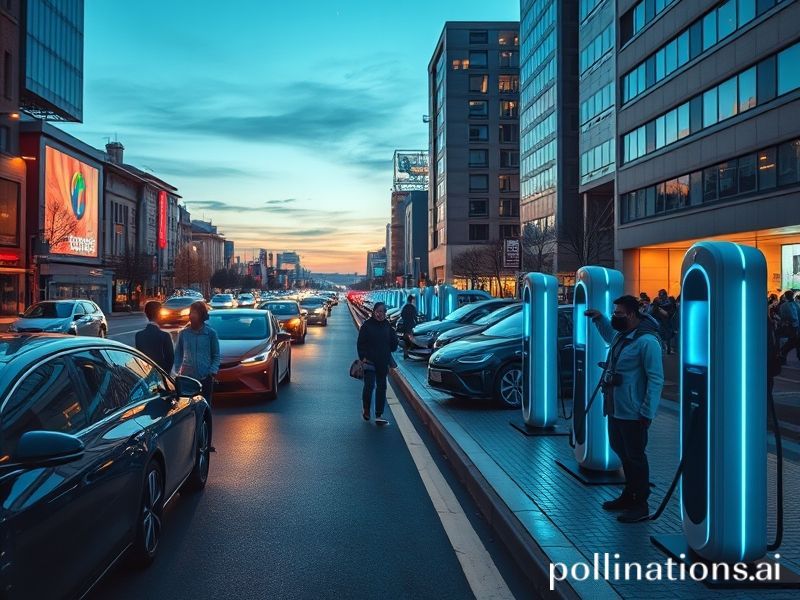Plugging Into the Future: Why EV Charging Reforms Are Revving Up the Internet
**Plugging Into the Future: Why EV Charging Reforms Are Revving Up the Internet**
Buckle up, folks, because the electric vehicle (EV) revolution is not just about cars anymore—it’s about the infrastructure that keeps them humming. EV charging reforms are suddenly the talk of the town, or rather, the globe. From policy changes to tech innovations, the way we juice up our electric rides is getting a serious upgrade. But why is this topic suddenly trending harder than a Tesla on Ludicrous mode? Let’s dive in.
**The Cultural Context: From Gas Guzzlers to Electron Sippers**
Remember the days when filling up your car meant pulling into a gas station, swiping your card, and pretending you knew what “premium unleaded” actually meant? Well, those days are slowly but surely fading into the rearview mirror. The cultural shift towards sustainability and eco-conscious living has propelled EVs from niche to mainstream. But here’s the catch: what good is an electric car if you can’t find a place to charge it?
Enter the stage: EV charging reforms. Governments and private companies worldwide are scrambling to install more charging stations, standardize plug types, and make the whole process as seamless as ordering a pizza. The cultural narrative is shifting from “Why would I need an electric car?” to “How do I get one and where do I charge it?”
**The Social Impact: Charging Ahead, Together**
The social impact of EV charging reforms is as significant as it is subtle. Imagine a world where road trips aren’t interrupted by the frantic search for a gas station. Instead, you pull into a sleek charging hub, grab a coffee, and let your car juice up while you relax. This is the vision that’s driving the push for better charging infrastructure.
But it’s not just about convenience. EV charging reforms are also about accessibility and equity. Ensuring that charging stations are available in urban and rural areas alike means that everyone, regardless of where they live, can benefit from the transition to electric vehicles. It’s a step towards a more inclusive and sustainable future.
**Why It’s Significant: The Power of the Plug**
The significance of EV charging reforms lies in their ability to accelerate the adoption of electric vehicles. The more accessible and convenient charging becomes, the more people will be inclined to make the switch from gas-guzzlers to electron-sippers. This, in turn, reduces our collective carbon footprint and moves us closer to a greener, cleaner planet.
Moreover, the push for better charging infrastructure is spurring innovation. Companies are developing faster charging technologies, wireless charging solutions, and even solar-powered charging stations. The race is on to make EV charging not just efficient but also sustainable.
**The Global Trend: A Worldwide Charge**
From the United States to China, and from Europe to Australia, EV charging reforms are making headlines. Governments are setting ambitious targets for EV adoption and investing heavily in charging infrastructure. Private companies are also jumping on the bandwagon, with tech giants and automakers collaborating to create seamless charging networks.
In the U.S., the Biden administration has set a goal to install 500,000 new EV chargers by 2030. In Europe, the European Commission is pushing for a massive expansion of charging infrastructure to support the bloc’s climate goals. Meanwhile, China, the world’s largest EV market, is already ahead of the curve with a vast network of charging stations.
**Conclusion: The Road Ahead**
The trend of EV charging reforms is more than just a blip on the radar. It’s a sign of a fundamental shift in how we think about transportation, energy, and sustainability. As the world charges ahead (pun intended), the reforms in EV charging infrastructure will play a crucial role in shaping our collective future.
So, whether you’re an EV enthusiast or just someone who’s curious about the future of transportation, keep an eye on this trend. Because one thing is clear: the future is electric, and it’s charging up fast.







